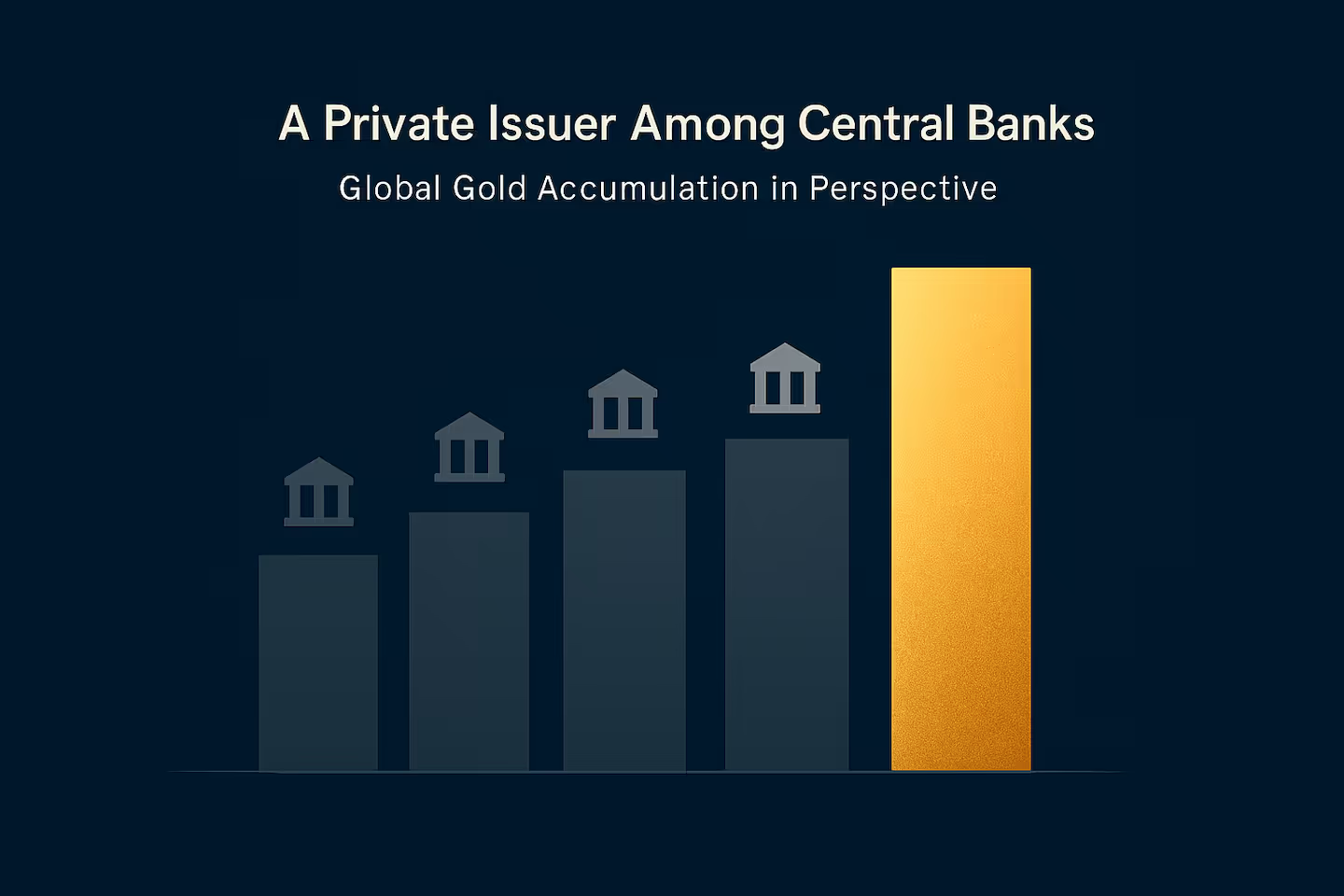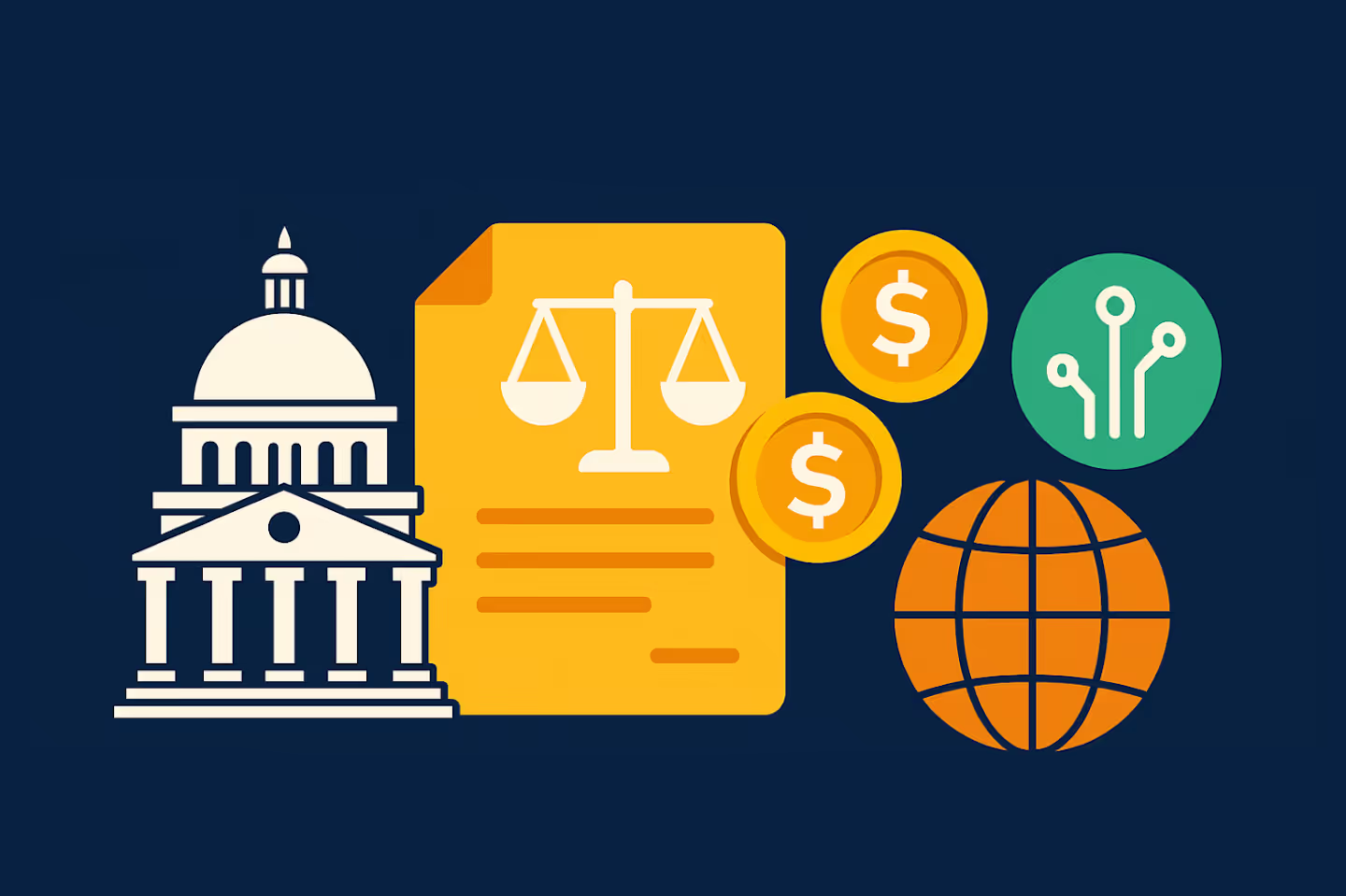The GENIUS Act and the Rise of Regulated Stablecoins
How the GENIUS Act transforms U.S. stablecoin rules and global market structure.
The United States has finally entered the stablecoin era — and the ripple effects will reach far beyond Washington.
For years, stablecoins have operated in regulatory limbo: integral to crypto markets but outside the perimeter of traditional financial law. With the GENIUS Act (Guaranteed Electronic Network for Integrated and Universal Stablecoins), the United States has taken its first decisive step toward giving these digital dollars a clear legal home.
The Act, signed into law earlier this year, marks a turning point — positioning the U.S. to compete with Europe’s MiCA framework and the UK’s forthcoming stablecoin regime. But beyond the legislative headlines, the GENIUS Act introduces new complexities for issuers, custodians, and liquidity providers worldwide.
A Federal Framework for Stable Value
At its core, the GENIUS Act establishes a federal licensing regime for stablecoin issuers. Any entity offering payment stablecoins to U.S. residents must now be federally approved, maintain high-quality reserve assets, and provide daily transparency on backing and redemptions.
Key provisions include:
- 1:1 Reserve Requirements: Reserves must be held in cash or short-term Treasuries, fully segregated from the issuer’s balance sheet.
- Federal Oversight: Issuers will fall under the joint supervision of the Treasury, Federal Reserve, and OCC, depending on structure.
- Redemption Guarantees: Users must be able to redeem at par, on demand.
- AML/CTF Controls: Stablecoin flows are subject to the same standards as traditional payment systems.
The Act aims to close the gap between unregulated digital dollars and the safety of bank deposits — without absorbing stablecoins into the banking system entirely. It’s a pragmatic move that preserves innovation while imposing financial discipline.
Implementation: The Rulemaking Phase Begins
Passing the Act was only step one. The U.S. Treasury has now opened an Advance Notice of Proposed Rulemaking (ANPRM), inviting comments on technical aspects such as reserve composition, custody standards, and the treatment of non-U.S. issuers.
This phase will determine whether the framework delivers on its promise of stability — or creates new friction. For instance:
- How strictly will the “cash-equivalent” rule be enforced?
- Will non-bank fintechs be allowed to issue under the same licence as banks?
- How will foreign stablecoins like USDT or USDC Europe fit into the system?
The answers will shape both the competitiveness of U.S. markets and the global flow of digital dollars.
Market Reactions: From Experiment to Infrastructure
The response from industry has been immediate. BlackRock recently launched a GENIUS-aligned fund designed to serve as an institutional reserve vehicle — signalling the emergence of a new asset class: regulated stablecoin reserves.
Payment processors, fintechs, and DeFi platforms are racing to integrate compliant stablecoins to preserve U.S. market access. Exchanges anticipate a migration toward “whitelisted” stablecoins as counterparties tighten risk frameworks.
In short, the GENIUS Act is transforming stablecoins from speculative tools into core market infrastructure — a shift reminiscent of money-market fund reform in the early 2000s.
The Global Context: Divergent Paths Converging
Europe: MiCA and the Rise of the Euro Stablecoin
Europe’s Markets in Crypto-Assets (MiCA) framework, already partially in force, also regulates asset-referenced tokens and e-money tokens. Yet MiCA’s focus is narrower: it treats stablecoins primarily as financial instruments, not payment rails.
This creates an interesting divergence — MiCA limits large stablecoin circulation to €200 million per day, while the GENIUS Act places no such cap. For issuers, this could tilt global liquidity toward U.S.-denominated tokens unless Europe relaxes its thresholds.
United Kingdom: The Pragmatic Middle Ground
The UK, meanwhile, continues to develop its own stablecoin regime, expected by 2026. The Bank of England and FCA are coordinating a framework that would recognize stablecoins as settlement assets, paving the way for integration into the payment system.
This approach may blend the best of both worlds: the legal clarity of the U.S. with the operational safeguards of traditional finance.
Winners, Losers, and Open Questions
Winners:
- Regulated issuers like Circle, PayPal, or fintechs ready to meet banking-grade standards.
- Institutional market makers providing liquidity for compliant tokens.
- U.S. Treasury markets, which could see demand surge as stablecoin reserves expand.
Losers / Risks:
- Offshore issuers unable or unwilling to comply with U.S. standards.
- DeFi protocols dependent on unregulated stablecoins, facing potential liquidity fragmentation.
- Smaller issuers struggling with compliance costs and reserve audits.
Open Questions:
- Will the GENIUS framework become a model for global adoption — or create regulatory silos?
- Could banks re-enter the stablecoin space to protect deposit bases?
- And what does this mean for CBDCs, now arguably playing catch-up to private innovation?
The Bigger Picture: Institutionalization in Motion
The GENIUS Act reflects a broader transition underway in digital assets: the institutionalization of crypto finance. Regulation is no longer reactive; it’s strategic. Stablecoins — once dismissed as risky experiments — are now recognized as the connective tissue between traditional finance and blockchain networks.
As the U.S., EU, and UK align their frameworks, the global digital-money ecosystem is moving toward regulated interoperability — one where liquidity, compliance, and transparency define competitiveness.
For institutional holders, this new regulatory clarity doesn’t just affect issuers — it reshapes how digital assets are managed and deployed. Solutions like Portofino’s Treasury Management offering help bridge that gap by providing secure, compliant infrastructure for managing stablecoins and other digital reserves within evolving global frameworks.
The challenge for issuers and exchanges is not whether regulation will come, but how fast they can adapt.
Key Takeaway
The GENIUS Act is more than a U.S. stablecoin law — it’s a signal that digital finance has entered its regulatory maturity phase. As rule-making unfolds, the winners will be those who combine technological agility with institutional discipline, bridging the old and new worlds of money.
Others articles

Thought leadership
How tokenised gold is emerging as a new store of value alongside USD stablecoins.

Thought leadership
Why DATs reset after the bubble, and why today’s entry point is stronger.

